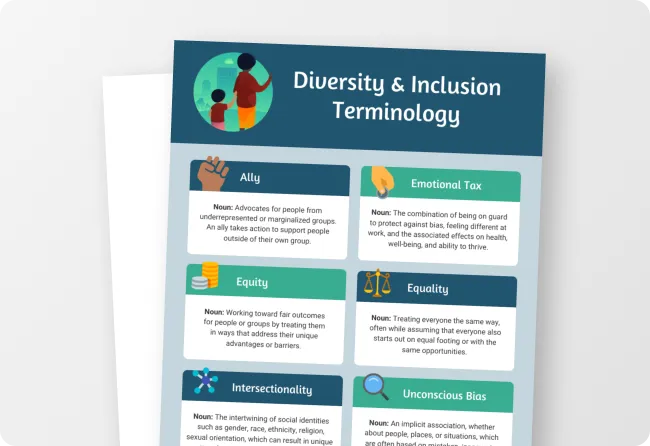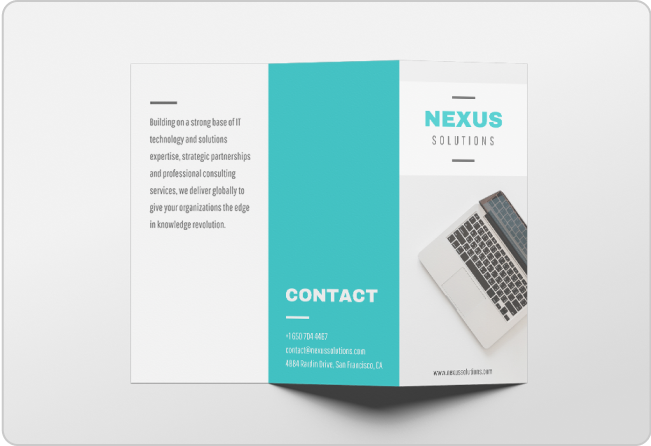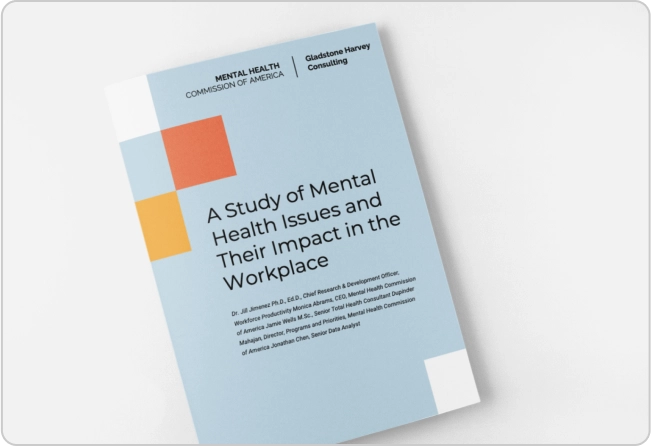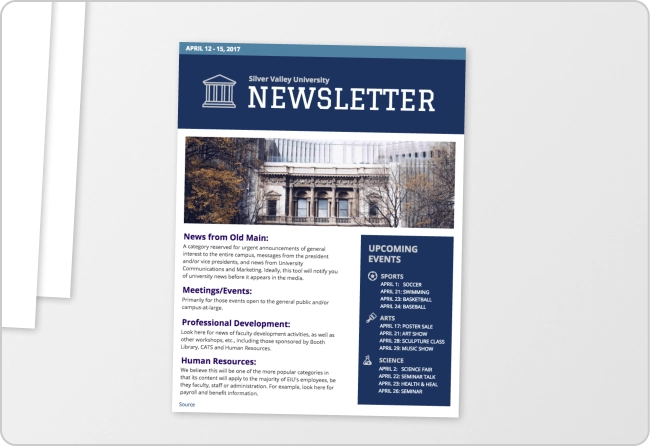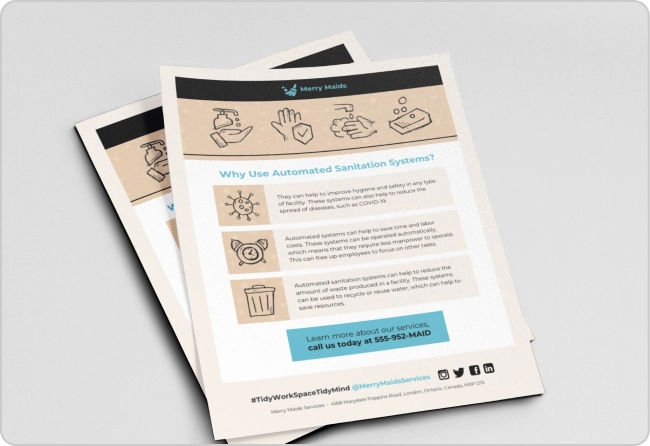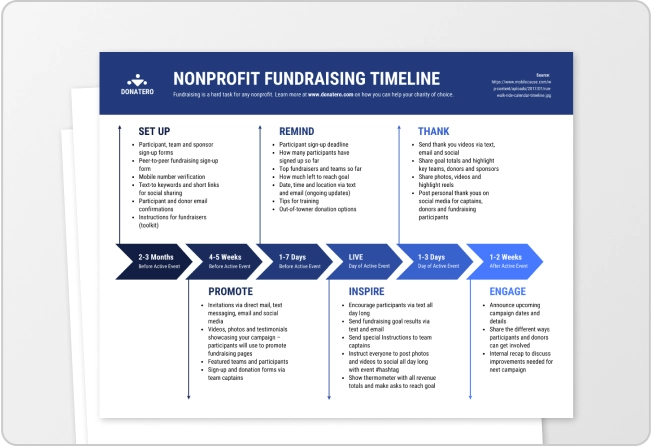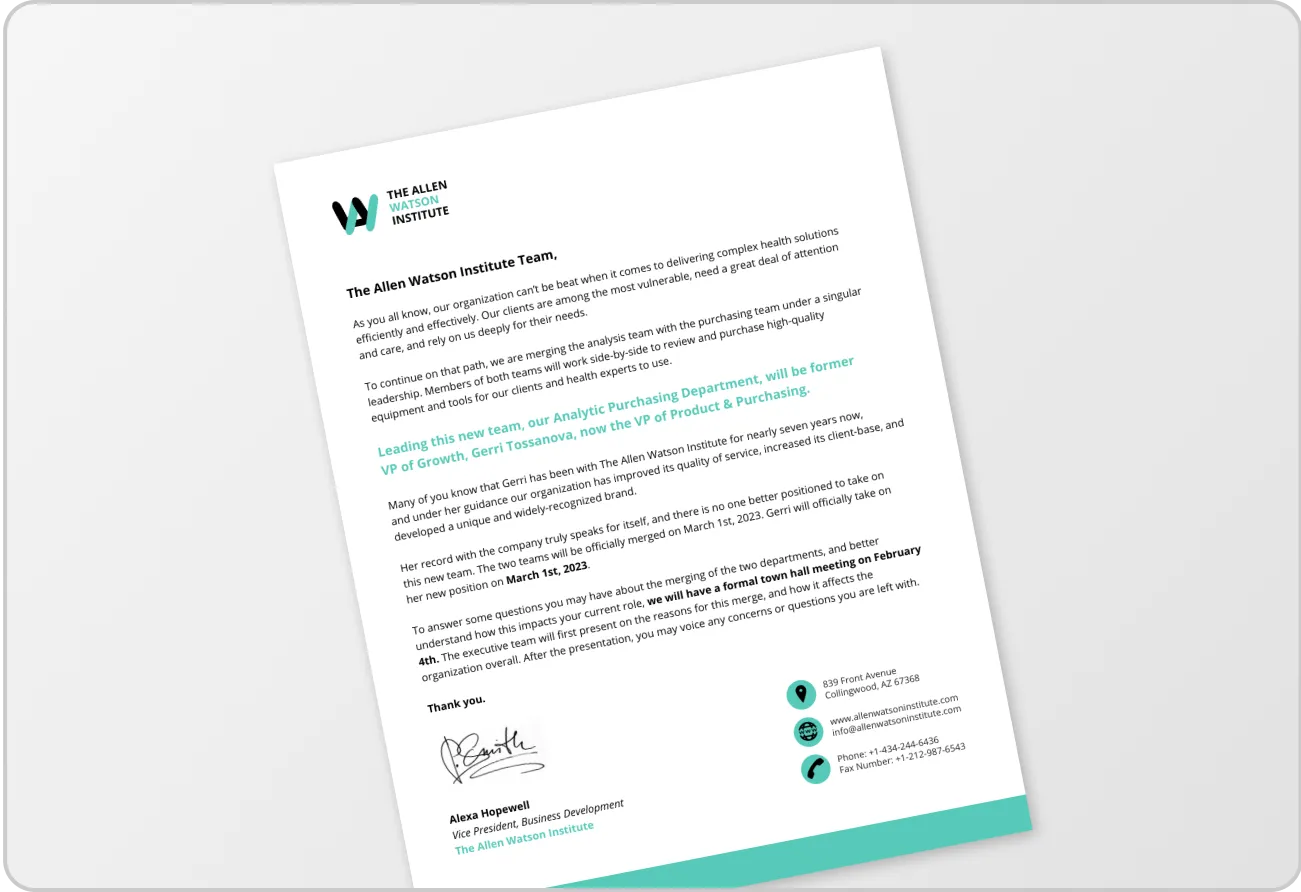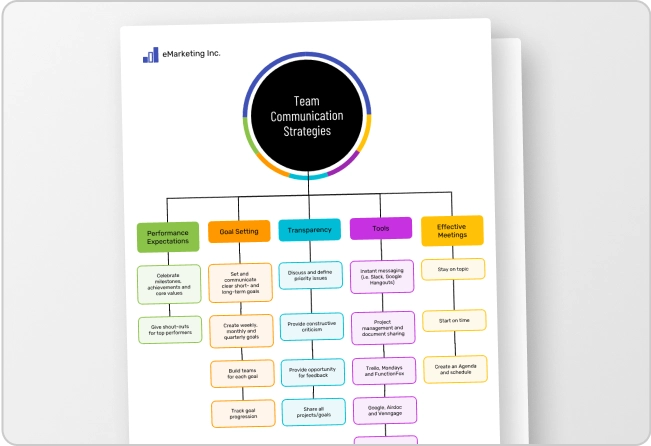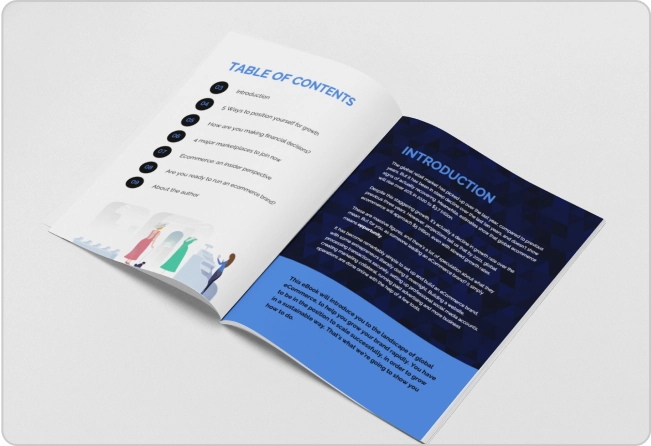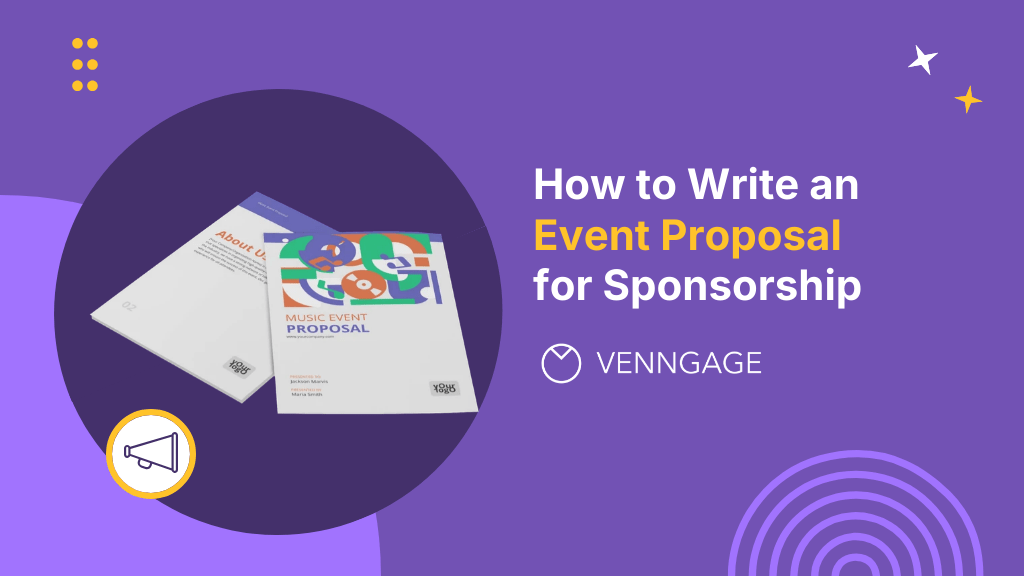
When I was in college, I was a part of a handful of student groups that were constantly looking for sponsors.
I still remember writing my first-ever sponsorship proposal for an event. The pitch was completely sloppy, it had a weak structure and the answer from the sponsors was (you guessed it) a big no.
Over the years, I’ve realized that good events don’t sell themselves. You need a proposal that convinces sponsors it’s worth investing in. In this post, I’ll show you exactly how to write a solid event proposal with real examples and templates you can apply right away.
What is an event sponsorship proposal?
An event sponsorship proposal is a brief document you share with potential investors that explains what your event is about and why funding it makes sense for them.
It often offers details about your event goals, the audience you’ll reach and the specific benefits sponsors get, such as visibility, access to a niche audience or brand partnerships.
Think of it as a mix between a business case and a sales pitch – except instead of selling a product, you’re selling visibility, engagement and brand exposure at your event.
From the HeySummit blog
And it’s not just for student groups or nonprofits applying for a grant proposal. Trade associations, sports clubs and brands running business conferences use event proposals the same way they’d use a marketing proposal: to win sponsorships and funding.
Difference between sponsorship proposal vs. general event proposal
A sponsorship proposal is written specifically for sponsors. It focuses on the return they’ll get for their investment.
According to Event Espresso:
The ultimate goal of an event sponsorship proposal is to secure funding and support for the event, while also providing value and opportunities for the sponsoring organizations.
But a general event proposal is different. It covers the event’s purpose, schedule and logistics for internal stakeholders or partners. However, it doesn’t aim to prove return on investment (ROI) for outside sponsors.
For instance, a hospital administration might prepare a general proposal that focuses on the agenda, venue and budget for a medical conference.
Why a well-written proposal matters
Sponsors invest in events because they want certain business outcomes. A clear, well-written sponsorship proposal turns your ideas into real results.
Here’s what a well-written proposal leads to:
1. Builds credibility with sponsors
When you present data and past success in a polished manner, sponsors can see that you take your events seriously. So they’ll take you seriously in return. A structured, research-based proposal shows that you’re strategic.
A well-structured proposal not only looks professional but also inspires confidence that your team will deliver as promised.
From the Vanco Payments blog
2. Helps sponsors see the ROI
Sponsors want proof that their money can turn into more reach, leads or brand visibility. You need to paint a clear picture of what they’ll get, such as engagement, media exposure or conversions.
Use numbers like “our event drew 1,500 marketers, 65% held decision-making roles.” That shows them the value in hard terms.
Merely stating the figures isn’t enough, so build ROI into a narrative that contextualises the financial benefits and connects them to the bigger picture.
From the Congrex Switzerland blog
3. Increases chances of getting a “yes”
The best proposals do three things: align with sponsor goals, deliver proof and make it easy to act. When you speak their language (i.e., ROI, exposure, alignment), you give sponsors a reason to believe in you and say “yes” to your offer.
But here’s the catch: sponsors get tons of proposals and most of them go straight to the reject pile. A well-structured, personalized proposal that speaks to a sponsor’s goals has a much better chance of getting a “yes.”
From the HeySummit blog
Common mistakes to avoid in sponsorship proposals
Sometimes, even the most experienced event organizers can make these obvious mistakes:
1. Lack of clarity
When you say “we expect a large crowd,” you lose sponsors. They tune out because there’s no clarity. Instead, give them specifics: attendee roles, industries and expected engagement.
2. No communicating benefits clearly
A proposal that only says what you want is a pitch that fails. You must spell out what sponsors get. Better yet, say, “You’ll get your logo in three social posts reaching 8,000 local professionals.”
3. Making it unnecessarily lengthy
Long, dense proposals feel like homework. Sponsors don’t read walls of text. Keep it tight. Focus on value. One clear, concise page that highlights why this matters to them outperforms a five-page novel.
Key components of a winning event sponsorship proposal
A sponsorship proposal isn’t just another paperwork. It’s proof that your event is an investment, not an expense.
If you can’t spell that out, your proposal goes straight to the recycle bin.
1. Event overview
Start with the important basics, but do it in a way that shows thoughtfulness.
Mention the date, location, format and audience size right at the beginning. Don’t make your potential sponsors hunt for the facts. Make it easy for them to scan the important event details right at the start.
Also, make it more than a checklist. Why does this event matter this year? A fintech summit in 2025 isn’t the same as one in 2018. The stakes are different. The market is different.
When SaaStr pitches its annual event, the hook isn’t “three days in San Mateo.” It’s “the gathering point for 13,000 SaaS founders and execs.” The event matters because the community cares and that’s what sponsors buy into.
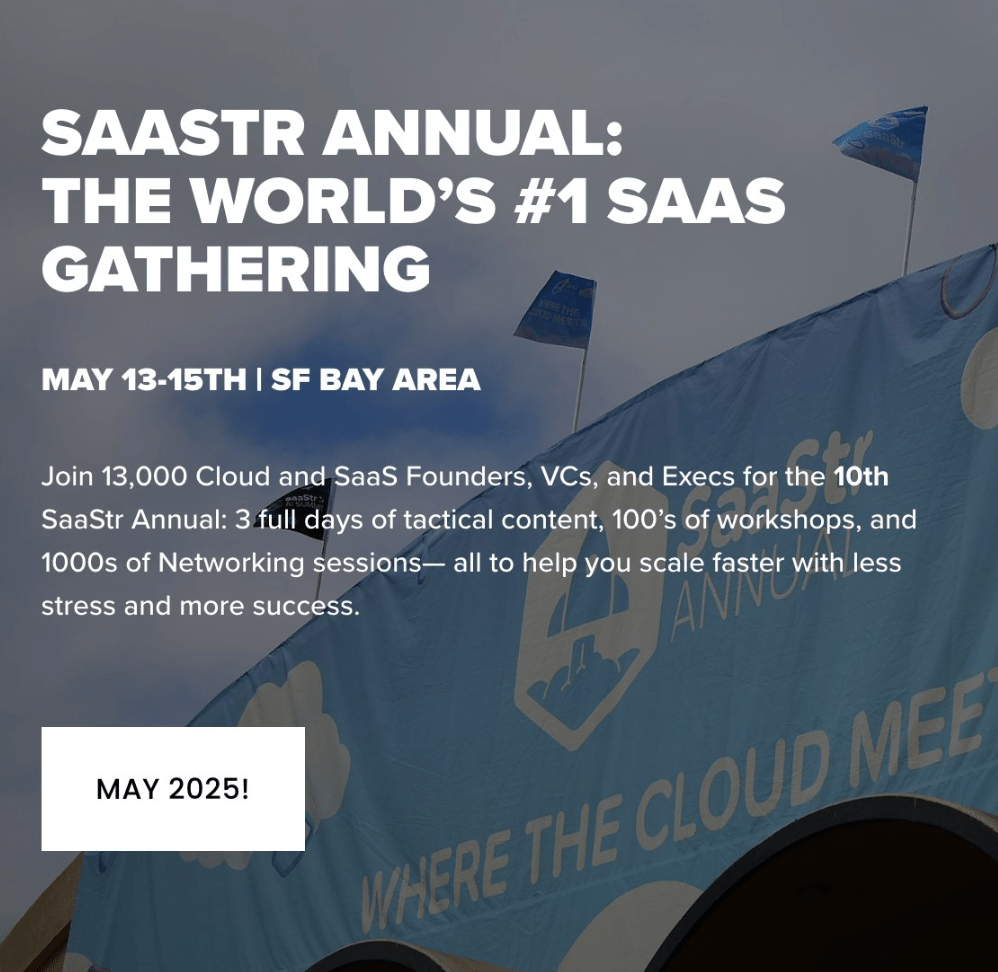
2. Target audience and reach
This is where weak proposals collapse. You can’t say “young professionals” and expect anyone to write a check. Sponsors want to see a clear alignment between your audience and their ICP.
Give them data they can’t ignore: job titles, seniority mix, industries and buying power. If 60% of your attendees are mid-level managers in finance, write that. If you can show that your LinkedIn posts reach 40,000 organic impressions a month, add it.
Think of it this way: if you were selling a product, you’d have a customer persona. Your event is no different. Sponsors want proof that your “customer” looks like theirs.
Here’s an example from Dreamforce, that segmented its audience groups to show potential sponsors exactly what type of crowd will attend:
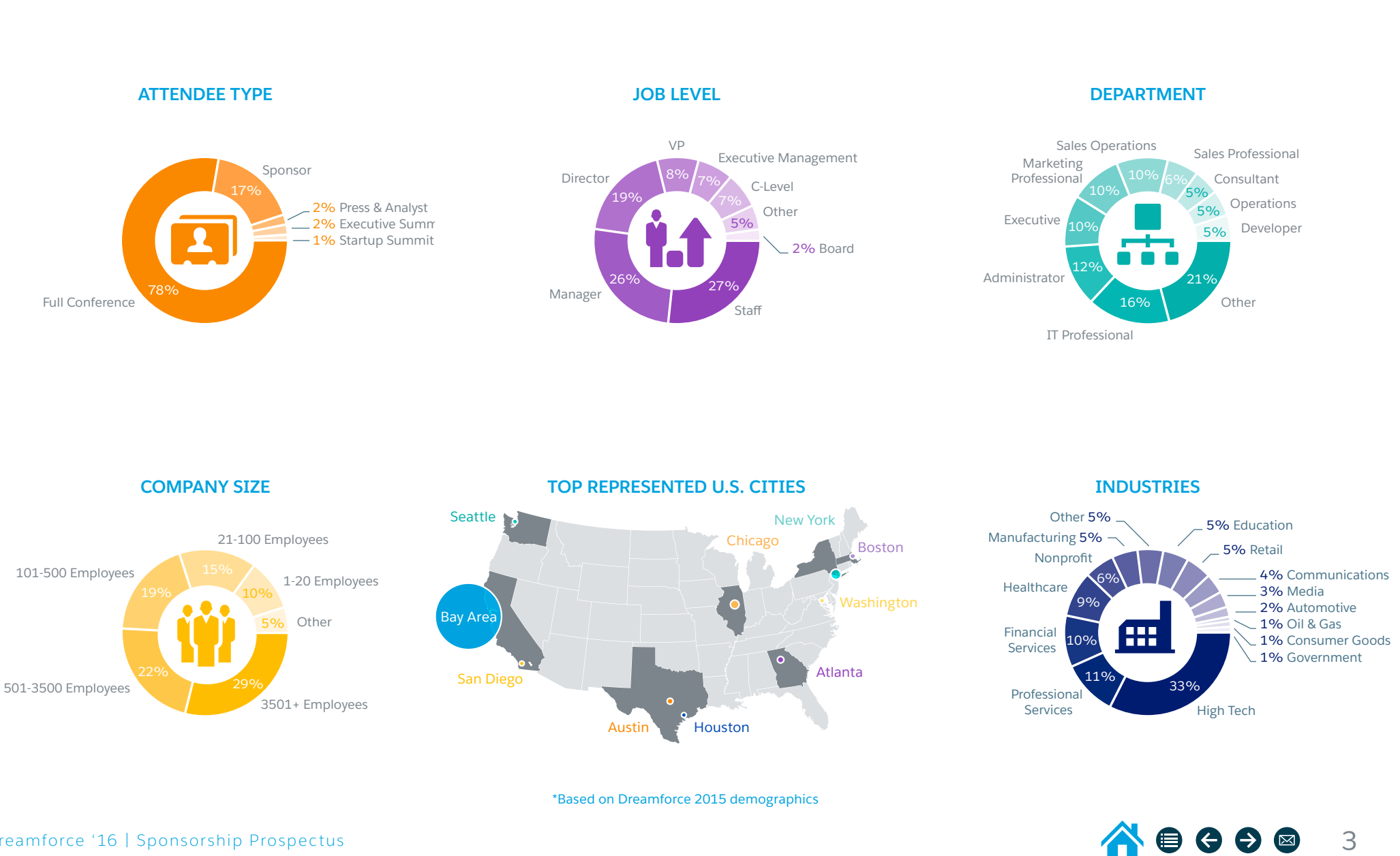
3. Sponsorship opportunities and benefits
Too many proposals make this section read like a donation form. “Gold, Silver, Bronze” with no substance comes across as lazy. Sponsors don’t necessarily want vanity titles; they pay for outcomes.
Spell out what each tier really delivers: stage time, exclusive branding, booth traffic, lead lists or social mentions. And quantify it wherever you can. Instead of saying “logo visibility,” say “logo included in three pre-event emails reaching 18,000 subscribers, plus on-site signage in the main hall.”
Over the years, HubSpot’s Inbound conference has grown so successful that it has evolved into a brand of its own. Inbound’s landing page does a great job of explaining the benefits of sponsoring its event:

That’s the level of thought you need to bring, even if your event is a 500-person business conference in Chiang Mai or a 2000-person skiing and snowboarding event in the Alps.
4. Marketing and promotion plan
This is where you can stand out from the average event proposals. Don’t just list channels; instead, show sponsors that you’ve mapped a campaign.
For each channel, add numbers and timing. Example: “Four email sends to 22,000 opted-in subscribers with a 27% open rate. Paid LinkedIn campaign targeting 5,000 VP+ decision-makers in APAC. Three podcast mentions with 12,000 average listens.”
If you can show that your marketing engine is real, sponsors feel safer. Remember, sponsors don’t want to buy hope; they want guaranteed visibility.
5. Budget and ROI
Money is where sponsors tune in or tune out. Don’t dance around it. Show exactly how sponsorship dollars will be used. Show what they’ll get back.
Break down costs with a pie chart or table. “35% venue, 25% production, 20% marketing, 20% operations.” Then tie the sponsor investment to returns. “Gold sponsors receive four guaranteed speaking slots, an estimated 400 booth visitors and inclusion in post-event highlight videos.”
ROI doesn’t always have to be hard revenue. It can be reach, exposure, leads or positioning. But you have to put numbers next to it. Otherwise, you’re asking them to gamble.
Think about sports. In 2024, Live Nation pulled in $764M in sponsorship revenue because brands know what they’re buying: stage time, fan eyeballs and guaranteed engagement.
Your event might not be Coachella, but the principle holds: quantify the sponsorship payoff.
The folks at B2B Ignite justify the event sponsorship ROI in each of the social testimonials on their website:
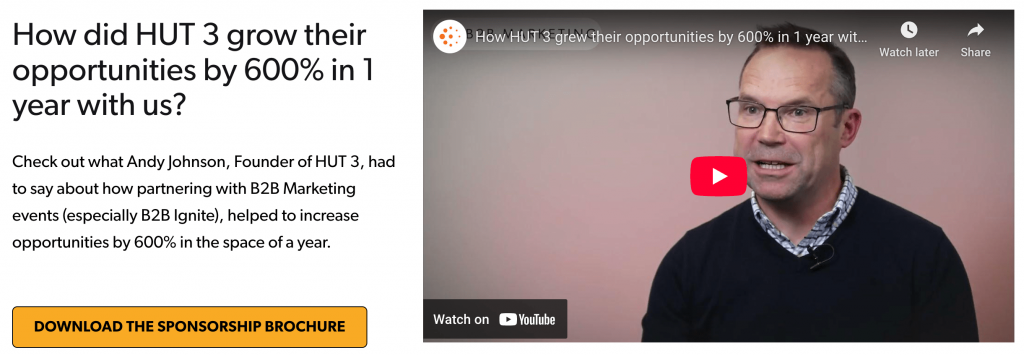
6. Call to action
It’s important to end your sponsorship proposal with clarity. Sponsors should know exactly what happens next.
Spell it out: “Reply to book a slot or schedule a 15-minute call here.” Give them a deadline. “We’re holding Gold until October 15.” People act when you create urgency and reduce friction.
And close with a single sentence that ties back to outcomes:
“Back this event and you’ll get direct access to 800 senior-level buyers in your target market.”
Here’s an example from B2BMX organizers on how to finish strong with a clear CTA: you can either explore the prospectus for details or contact the sales team directly for pricing:
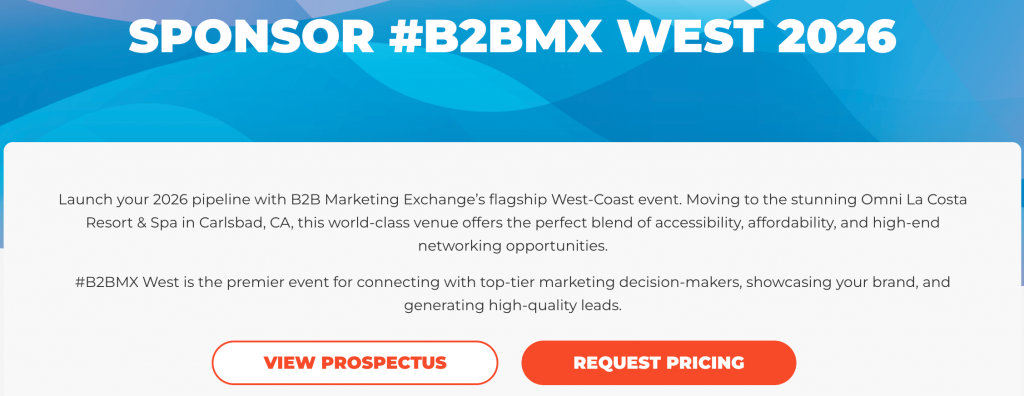
How to write an event proposal for sponsorship step by step
Treat the proposal as a sales document. Make it easy for sponsors to say yes. Follow these tips step by step to write a kickass event proposal for sponsorship:
Step 1: Research sponsors and tailor the proposal
Do real homework. Know the sponsor’s business, marketing calendar and recent activations.
“Activation” is when a sponsor does something at an event to get people to engage with their brand, such as setting up an interactive photo booth, running a product demo or giving away free branded merchandise (which is really easy to do through platforms such as Printful and Printify).
In your proposal, highlight at least one clear reason they should sponsor your event this year.
Here are a few tips to achieve this:
- Identify the sponsor’s campaign focus. Check their press, social, investor slides and recent sponsorships.
- Match one sponsor objective to one event asset. Example: the sponsor wants B2B demand. Offer a co-branded workshop with a 30-minute demo slot.
- Show the sponsor how your audience maps to their ideal customer profile. Use a one-page persona table with titles, company sizes and buying power.
According to Lumency’s Global Sponsorship Trends 2025, brands that focus on fewer, bigger sponsorship opportunities see a 12% higher ROI than those investing broadly.
Make your proposal count by showing sponsors how your event leads to measurable results that matter to them.
This example template is a good example on how to make your proposal urgent, compelling and irresistible:
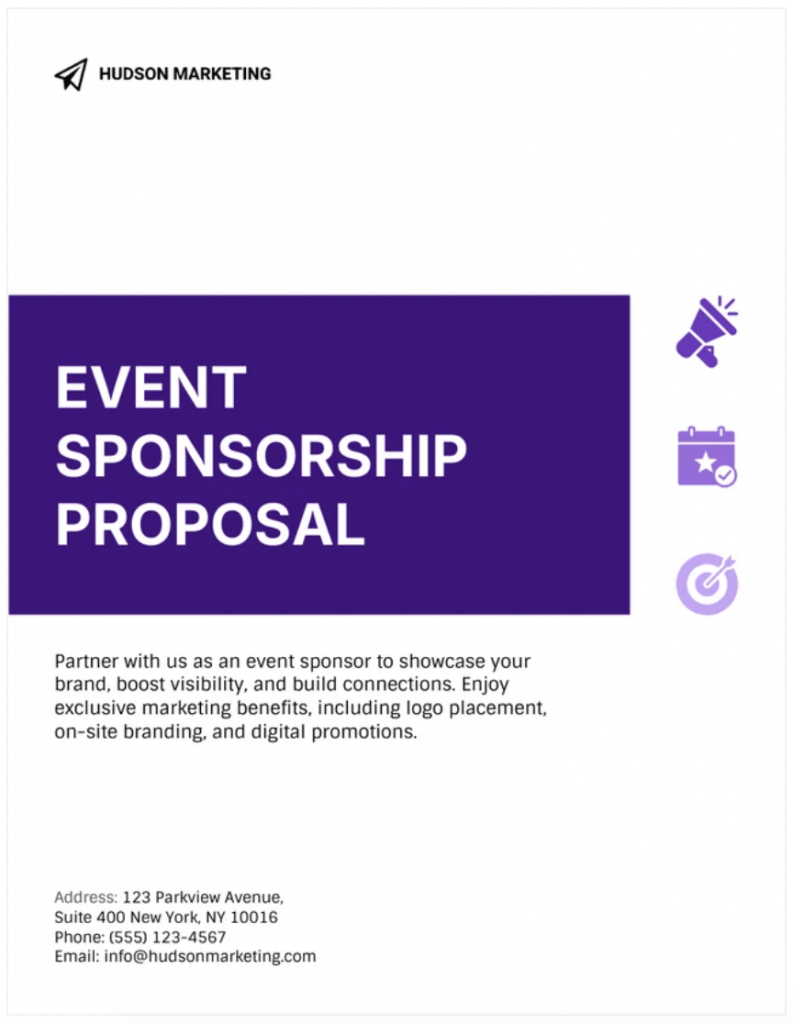
Related: How to Write a Research Proposal: A Step-by-Step Guide
Step 2: Start with a strong executive summary
An executive summary is a must-have in most formal business proposals because it frames the pitch upfront.
Think of this as your elevator pitch on paper. A sponsor should be able to glance at page one and instantly know what the event is, what you’re asking for and what’s in it for them. It makes sure that they don’t have to hunt for details elsewhere in the document.
Here are a few points to consider incorporating in your executive summary:
- One-line event hook. Example: “The largest B2B SaaS growth summit in APAC.”
- Spell out the ask upfront: “Gold sponsorship at $6,500.”
- Communicate three clear and measurable outcomes: “10 branded social media mentions, logo feature in 5 pre-event emails and a 5-minute keynote slot.”
You can also include a proof of credibility to build trust, such as mentioning the total number of last year’s event attendees and their demographic breakup.
Here’s a minimalistic event proposal template that lets you accommodate all of this info in a single executive summary page:

Step 3: Showcase your event’s value proposition
This is where you show that your event isn’t just another calendar event. Your sponsors want to know what makes your event uniquely valuable to them and you need to do so proactively.
Here’s how to approach it:
- Craft a one-sentence value proposition that ties directly to a sponsor’s outcome. Example: “Direct access to 60 mid-level IT buyers from Tier-2 banks actively seeking automation tools.”
- Back it up with data. Use past attendee demographics, engagement rates or survey insights. If 40% of your audience were decision-makers last year, say it. Decision-makers don’t argue with numbers.
- Add a short anecdote that shows traction. Example: “At last year’s summit, one sponsor closed a $120K deal after running a breakout workshop.” Include a reference if you can to make the story more credible.
Done right, this section tells sponsors that your event doesn’t just draw a crowd; it brings together the exact people they want to influence and it can directly fuel their pipeline or brand goals.
Here’s a great example from GoGather that checks all the boxes in one go: short overview, audience break-up, past credentials and value prop.
GoGather offers a great example that checks all these boxes: short overview, clear audience breakdown, proven past credentials and a compelling value prop.
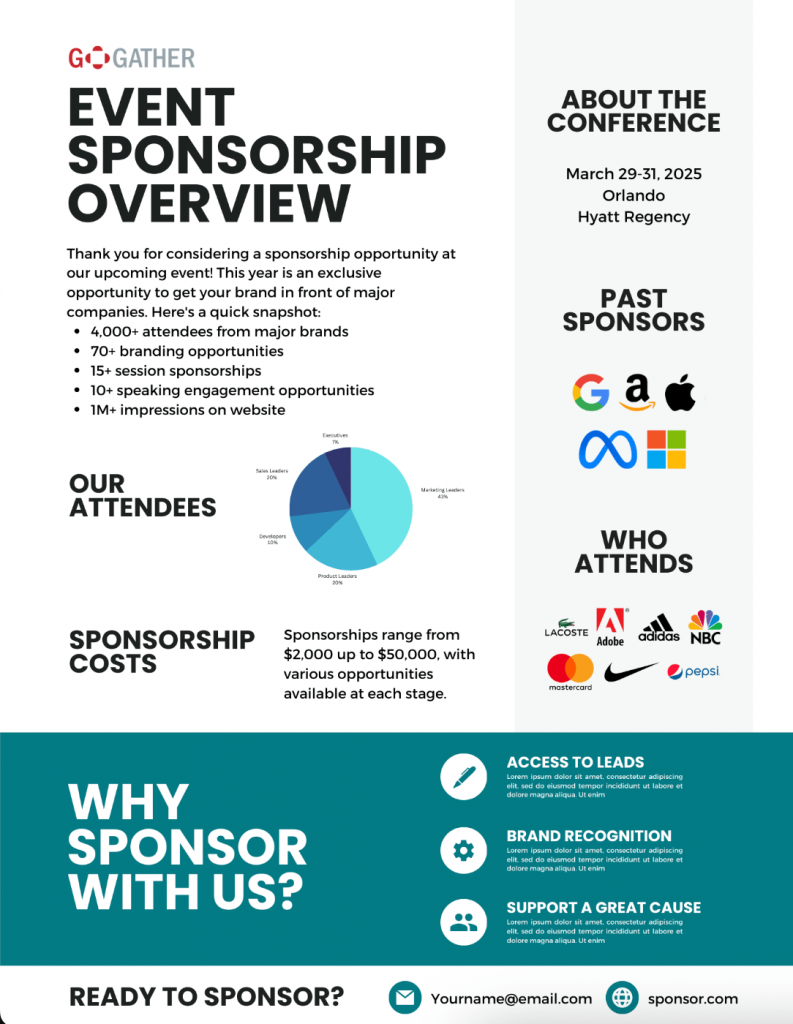
Step 4: Highlight sponsorship benefits clearly
This is where you can sell the event as “outcomes they’ll get.” Sponsors don’t care about a logo on your website. What they really care about is whether that logo gets in front of 2,000 of their target buyers.
So, frame each benefit with clarity and numbers:
- Mention the exact deliverable with counts. For example: “Pre-event emails: 3x to 24,000 subscribers; expected opens 5,760; expected clicks 720.”
- A one-liner on why it matters. Something like: “Push leads into your SDR funnel.”
Once you’ve mapped this out, bundle the benefits into tiers: Gold, Silver, Bronze. Keep them simple:
- Gold might include a 3-minute opening slot, main-stage logo, four email placements and the full post-event lead file.
- Silver could mean a panel seat, secondary logo, two social posts and a booth.
- Bronze stays lean: logo on site, a couple of stage mentions and one sponsored post.
Finally, don’t bury this in paragraphs. Sponsors want to scan and compare quickly, so present it as a compact matrix. Ideally: one column for the benefits, one for the tiers and one for projected outcomes.
This sponsorship proposal explains its benefits and packages clearly, all on a single grid-format that’s easy to skim:
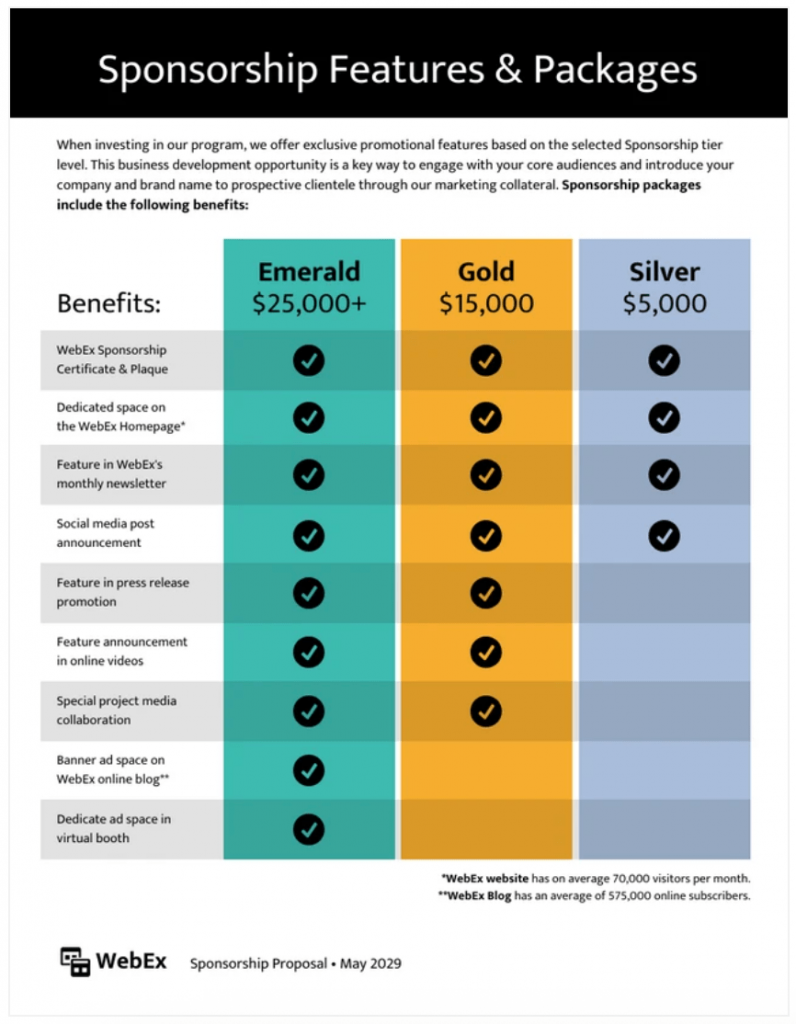
Step 5: Add data, visuals and testimonials
By now, you’ve shown sponsors what makes your event special and what they’ll get from partnering with you. This is the point where you seal the deal with proof.
Like I mentioned earlier, numbers are hard to argue with. So keep this section focused only on the important essentials:
- Audience snapshot: Break down titles, industries, and company sizes to prove alignment.
- Promo calendar: Show when and how you’ll market: emails, ads, partner pushes, press.
- Estimated impressions: Add reach numbers to demonstrate scale.
- Post-event report: Share metrics you’ll deliver back: attendance, leads, social reach and surveys.
78% of CMOs prioritize ROI measurement for sponsorship investments.
Lumency’s Global Sponsorship Trends 2025
Finally, bring it down to people. Add two short testimonials: one from a past sponsor who saw value and one from an attendee who found the event worthwhile. Names and company logos make these quotes carry even more weight.
APNIC does a wonderful job of visualizing important details in its sponsorship proposals:
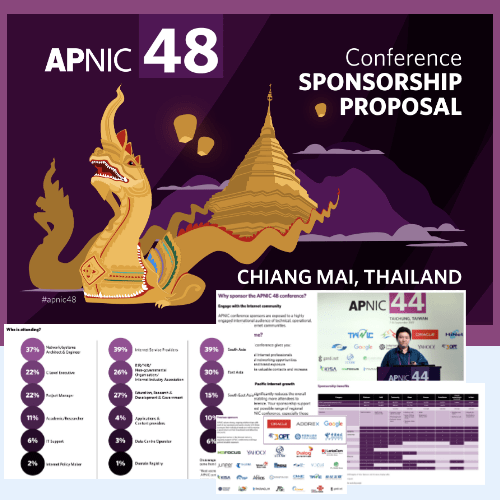
Step 6: End with a persuasive CTA
A strong proposal shouldn’t fizzle out at the end. This is the moment where you guide the sponsor to take action, so don’t leave them guessing about what comes next. Make the next step as simple and frictionless as possible.
Here’s how to do it well:
- One clear ask line. Spell out exactly what you want them to do.
- Example: “Confirm Gold sponsorship by Friday, October 10.”
- Two easy options. Give them a choice that suits their workflow. Option one could be booking a quick 15-minute call with a calendar link. Option two might be replying with a budget range so you can customize a package.
- Real urgency. If there’s only one premium slot left, say so, but only if it’s true. Authentic scarcity drives faster decisions.
Done right, this section reads less like a hard sell and more like a clear invitation. You’ve shown the value, now you’re just making it easy for them to say yes.
Here’s an example template that has the right intent, but you can tweak it just a little bit to add all the points we discussed above:
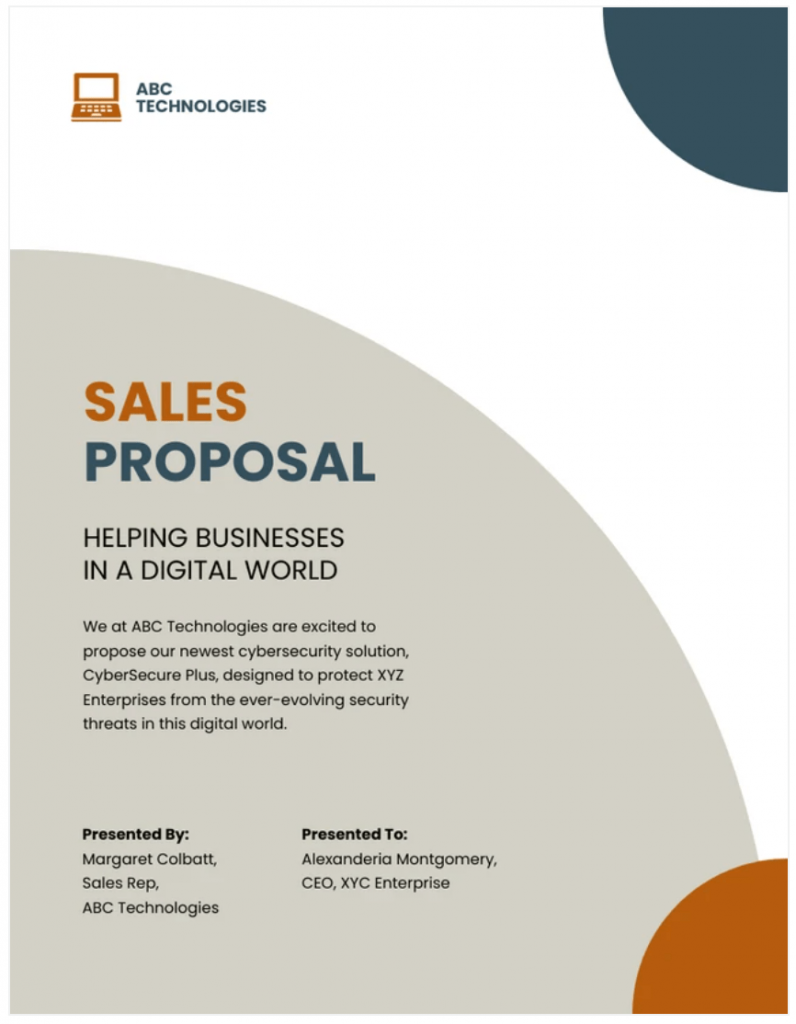
Event sponsorship proposal examples
When it comes to sponsorships, one size never fits all. The right proposal template depends on your audience, the type of event and the story you want to tell.
Here are three examples that show how you can tailor sponsorship proposals to different scenarios.
1. Music festival sponsorship proposal
This template strikes the perfect balance between energy and professionalism. The bold yellow-and-blue palette immediately conveys creativity and excitement, making it ideal for live events that thrive on atmosphere.
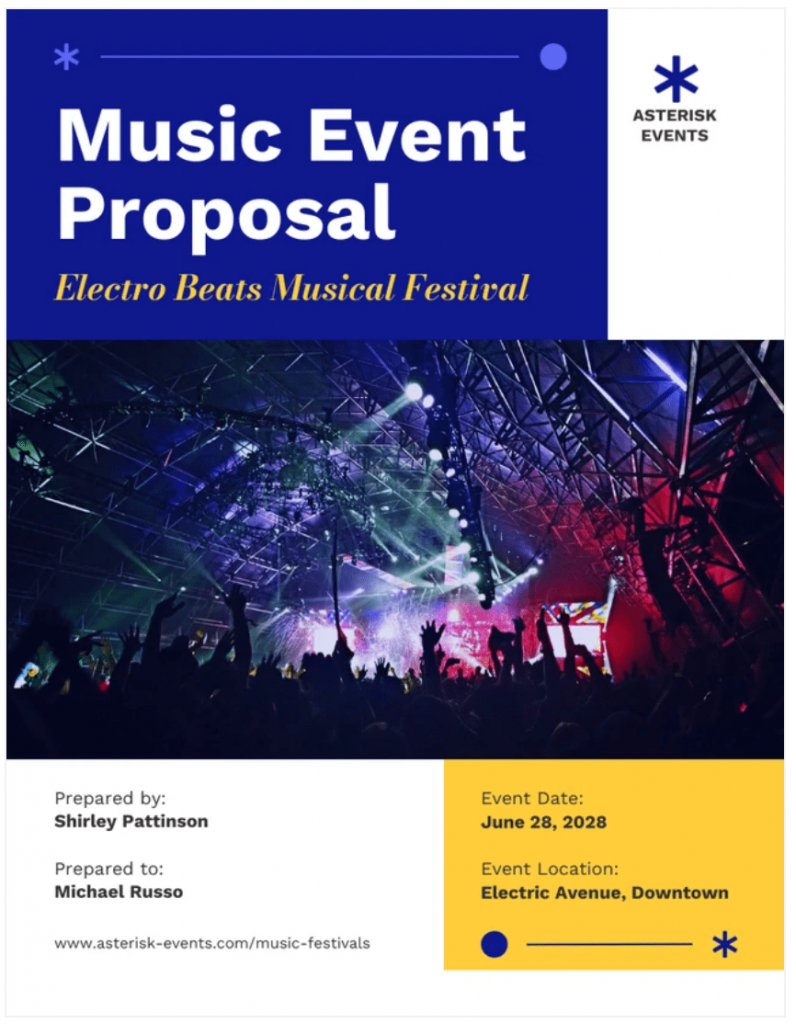
Clear sections for event details, sponsorship tiers and branding opportunities ensure potential sponsors see both the value and the vibe of partnering with you.
Beyond music festivals, this format also works well for art fairs, theatre productions and community cultural events where the focus is on creativity and audience engagement.
2. Nonprofit fundraiser sponsorship proposal
Nonprofits often need to win over sponsors with both empathy and clarity. This minimalist template does exactly that:
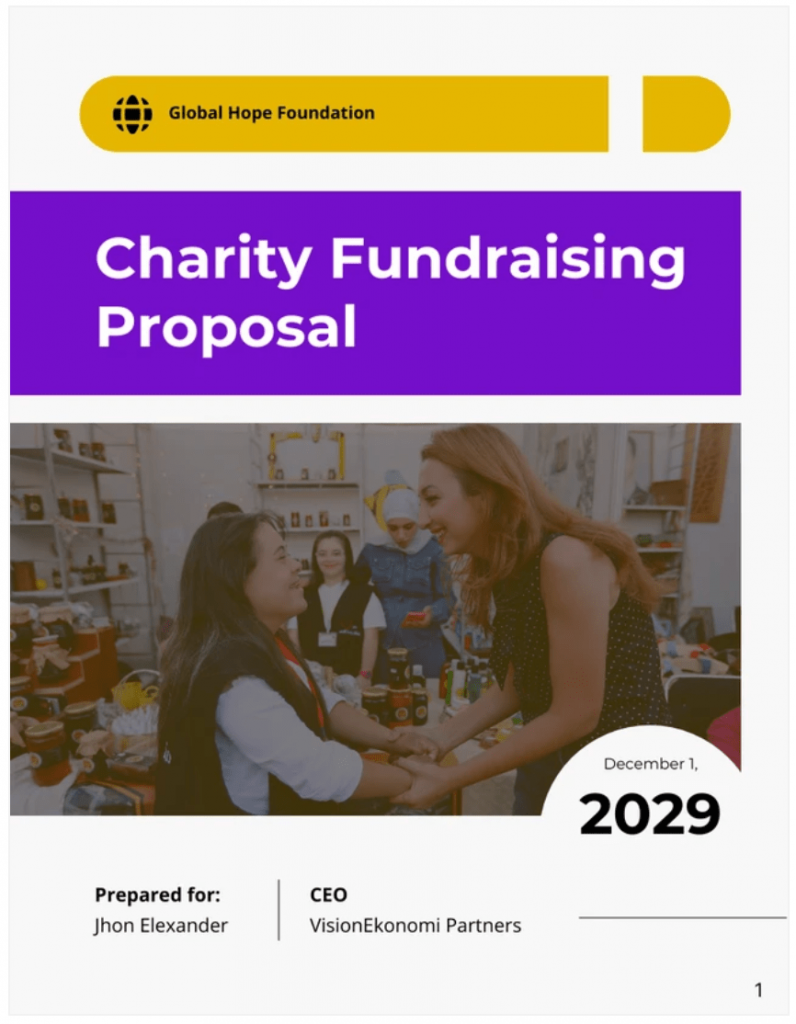
The clean design leaves plenty of room for compelling storytelling, while the well-structured layout makes it easy to outline sponsorship packages and the tangible impact of contributions.
Besides charity galas, this approach is also a strong fit for virtual fundraisers, school events or community awareness campaigns where the emphasis is on mission-driven storytelling.
3. Corporate conference sponsorship proposal
For high-stakes events like corporate conferences, a polished and professional look is essential. This template uses a sleek black-and-blue theme that signals authority and trustworthiness.
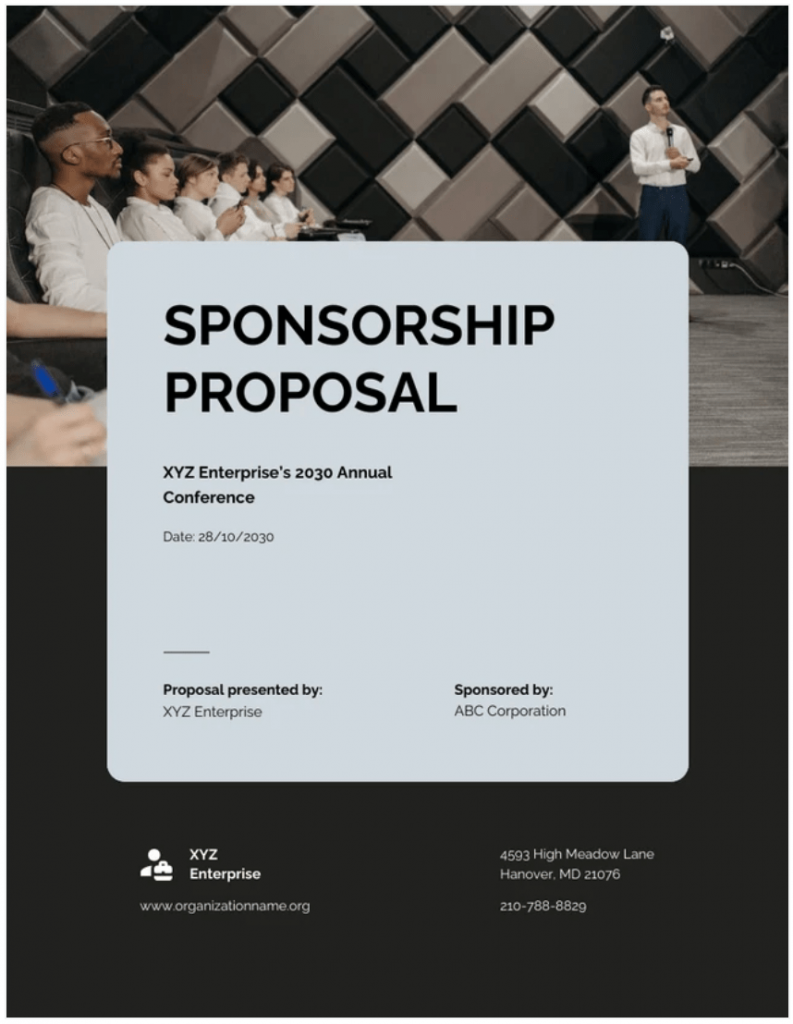
With designated sections for keynotes, agenda highlights and sponsorship deliverables, it reassures sponsors that their investment will be well-organized and high-profile.
You can also repurpose this style for trade shows, product launches or investor summits where professionalism and credibility take center stage.
Sponsorship proposal template (Free download)
Most sponsorship proposals fail because they fail in pitching. Sponsors don’t want a 20-page data dump. They want a clear, structured document that makes it obvious why your event matters and how it aligns with their goals.
That’s why having a simple, customizable framework matters. A template keeps you focused on the basics without drowning in irrelevant data.
Venngage’s sponsorship proposal templates are useful because they give you fully customizable, professional-looking designs that adapt to your industry and event type.
Plus, you don’t need to start from scratch. Just choose a template you like, paste your event-specific details and design a polished proposal in just a few minutes.
Here’s a free sponsorship proposal template that you can try for your next event:
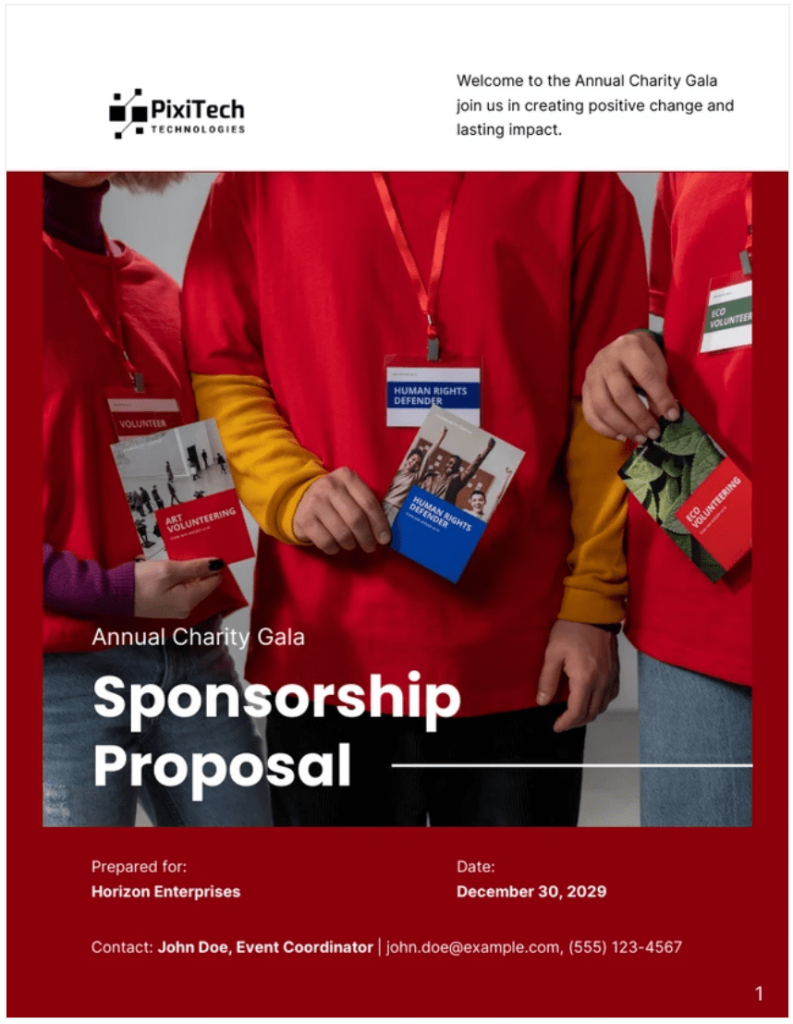
Tips to make your proposal stand out
Designing a perfect event sponsorship means making every word, image and element count. Here are four practical tips that you can apply to your event sponsorship proposal design to make it effective:
1. Personalize for each sponsor
We have already talked about this in detail: generic proposals don’t cut it. Make sure your proposal speaks uniquely to each sponsor.
Research like a salesperson. Look at their last year’s campaign, the biggest shifts in their market or a recent product launch. Next, align one of your event features to support that.
For instance, if a brand just launched a remote-working tool, offer them a “virtual lounge activation” that reaches remote professionals.
2. Use visual elements
Ideas in your proposal should be easy to scan and process. The right visuals make your proposal feel smarter and faster to read.
You can use a pie chart to showcase your past year’s event attendees’ demographics. Use timeline infographics to show event days and schedules. Similarly, use comparison tables to communicate sponsorship tiers and benefits.
3. Keep it concise
How long should an event sponsorship proposal be? There’s no fixed answer, but keep it short enough to hold attention while still giving sponsors the data they need to make a decision.
Make sure your readers can scan, pause and make quick decisions. Pretend as if you have booked a 10-minute-long meeting with a busy CEO and you have to sell them your product within that timeframe.
Keep your proposal’s structure lean to focus only on what matters: value, numbers and follow-up.
Experts at Snag Business agree: a proposal should be easy to navigate and light on unnecessary text.
4. Proofread for professionalism
In an age where free proofreading and AI tools are a dime a dozen, there’s no excuse not to proofread your written work.
Plug your copy into a tool like Grammarly, QuillBot or ChatGPT to audit for typos and inconsistent phrasing. But make sure you also do a thorough manual edit to get rid of poor formatting, bad font choices or awkward layouts.
Sponsors treat proposals as business documents. If it’s careless, they will jump to one of two conclusions: either you don’t care or you won’t deliver.
A clean and professional proposal shows you value their time as much as your own.
FAQs about event sponsorship proposals
Still have questions about how to write an event proposal for sponsorships? Here are quick answers to the most common questions:
How long should a sponsorship proposal be?
A sponsorship proposal is usually 2–4 pages, short enough to keep attention but detailed enough to show event value, audience insights and sponsor benefits.
How do you convince someone to sponsor your event?
You convince sponsors by aligning your event with their goals. Show clear ROI, audience fit and measurable outcomes like brand visibility, leads or engagement.
Turn event proposals into lasting sponsorships
Most proposals suck because they are long, vague and too focused on the event instead of the benefits for sponsors.
If your event proposal can fix these issues, you’ve already won half the battle.
Strong proposals don’t just secure funding. They build long-term relationships, improve your marketing strategy and open new opportunities beyond a single event.
Now that you’ve got a clear, step-by-step framework to write the perfect event proposal, it’s time to put it into practice.
Use one of Venngage’s proposal templates to turn your pitch into a persuasive story that drives outcomes. Or, use Venngage’s AI to do it for you in just a few seconds.




























